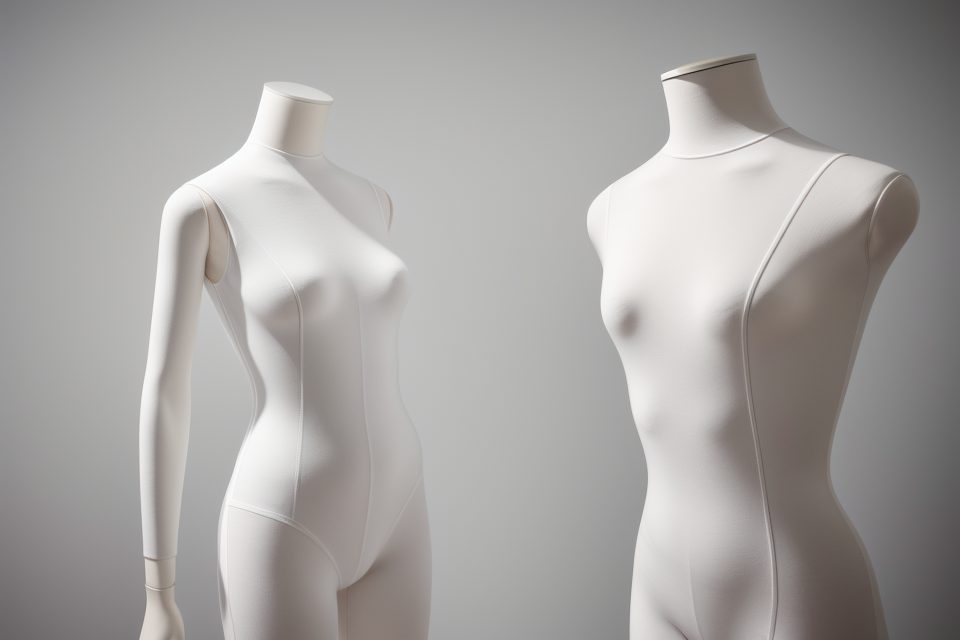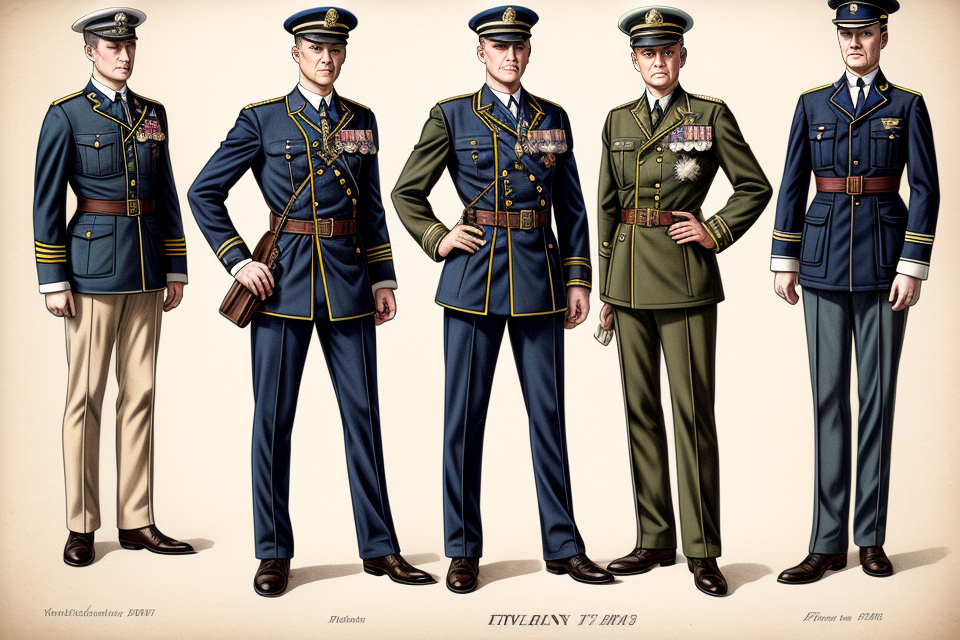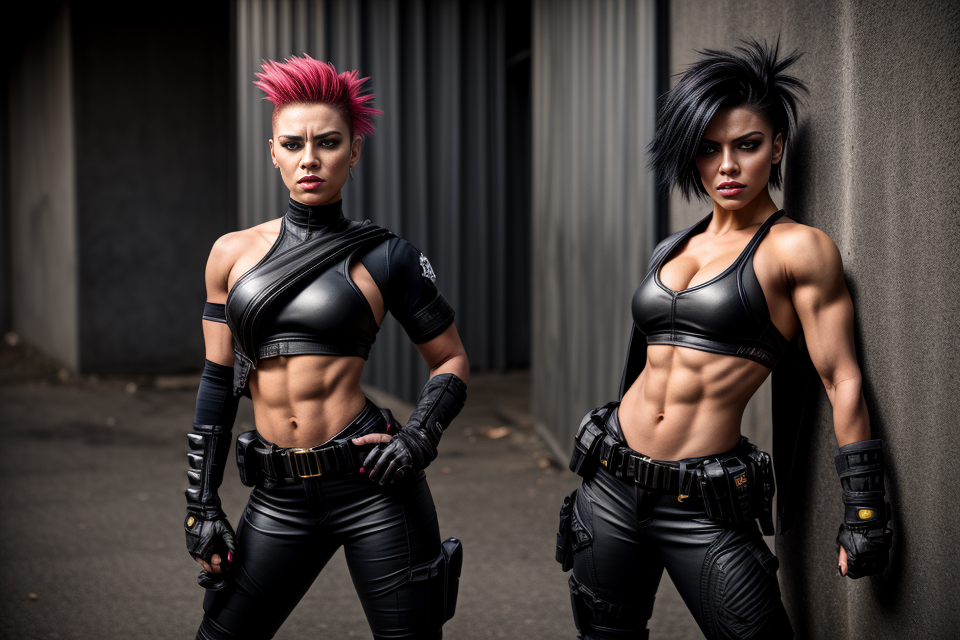
Uniform dressing, also known as the concept of uniformity in fashion, is the act of dressing in a manner that is consistent with a particular style or fashion trend. This trend has been a popular topic of discussion in recent years, as more and more people are opting to dress in a uniform manner, regardless of their personal style or preferences. But what does it mean to dress in a uniform way? And why is it becoming such a popular trend? In this article, we will explore the meaning of uniform dressing and why it is becoming increasingly popular. We will also examine some of the benefits and drawbacks of this trend, and provide tips on how to incorporate uniform dressing into your own wardrobe.
Uniform dressing refers to the practice of wearing a specific style or type of clothing as part of a uniform or dress code. This can include items such as shirts, pants, hats, and other accessories that are typically worn by individuals in a particular profession or organization. The purpose of uniform dressing is often to create a consistent and recognizable appearance among members of a group, and to establish a sense of identity and belonging. Uniform dressing can also serve practical purposes, such as providing protection or ensuring that individuals are easily identifiable in certain situations. Overall, uniform dressing is a way to communicate a shared sense of purpose and values through the clothing that individuals wear.
The concept of uniform dressing
Uniform dressing refers to the act of wearing matching or coordinated outfits, typically as part of a uniform or dress code. It has been a longstanding tradition in various industries, including the military, law enforcement, healthcare, and hospitality. The purpose of uniform dressing is to create a sense of unity and professionalism among individuals who wear the same attire.
The history of uniform dressing
Uniform dressing has been a part of human history for centuries, with early evidence of uniforms dating back to ancient civilizations such as the Romans and Greeks. The use of uniforms in modern times can be traced back to the 16th century when the military began using uniforms to distinguish friend from foe on the battlefield.
The benefits of uniform dressing
There are several benefits to wearing uniforms, including:
- Professionalism: Uniforms help to create a professional image for the wearer and the organization they represent. This is particularly important in industries such as healthcare and law enforcement, where a professional appearance is essential to maintaining public trust.
- Identity: Uniforms help to identify individuals as part of a particular group or organization. This is particularly important in industries such as hospitality, where employees need to be easily recognizable to customers.
- Safety: Some uniforms are designed to be safety-enhanced, with features such as reflective material or flame-resistant fabrics. This helps to protect the wearer from potential hazards on the job.
- Unity: Wearing the same uniform helps to create a sense of unity among individuals who wear it. This can help to foster a sense of teamwork and cooperation among colleagues.
The drawbacks of uniform dressing
While there are many benefits to wearing uniforms, there are also some potential drawbacks, including:
- Lack of individuality: Wearing a uniform can sometimes feel restrictive, as it limits the ability to express personal style. This can be particularly challenging for individuals who work in creative fields where self-expression is important.
- Cost: Uniforms can be expensive, particularly if they need to be purchased and laundered regularly. This can be a burden for individuals who are responsible for purchasing their own uniforms.
- Potential for discrimination: In some cases, uniforms can be used to discriminate against certain groups of people. For example, some organizations have used uniform policies to discriminate against women or individuals with certain physical characteristics.
Overall, the concept of uniform dressing is an important aspect of many industries, with both benefits and drawbacks to consider. While there are potential challenges associated with wearing uniforms, they can also help to create a sense of unity and professionalism among individuals who wear them.
The history of uniform dressing
==================================
The concept of uniform dressing has a long and rich history, dating back to ancient civilizations. Here are some key points to consider:
- Early examples: The earliest known examples of uniform dressing can be traced back to ancient civilizations such as the Egyptians, Greeks, and Romans. These societies used uniforms to distinguish between different social classes and to denote rank or status.
- Military uniforms: The use of uniforms in the military dates back to ancient times as well. The earliest recorded instance of military uniforms was in the Roman Empire, where soldiers were required to wear a distinctive tunic with a purple border to indicate their rank.
- 19th century: In the 19th century, uniform dressing became popular as a way to identify and distinguish individuals based on their profession or social status. This was a time of great social change, and uniforms helped to reinforce social hierarchies and to create a sense of order and discipline.
- Industrial revolution: The industrial revolution also played a significant role in the evolution of uniform dressing. As factories and other industrial sites began to appear, uniforms were introduced to identify workers and to maintain safety standards.
- Modern era: Today, uniforms are used in a wide range of industries, from healthcare and education to hospitality and retail. They serve as a visual representation of professionalism and help to establish a sense of identity and unity within organizations.
Overall, the history of uniform dressing is a fascinating one, reflecting the changing social, economic, and cultural contexts in which it has been used. Whether you’re interested in the historical significance of military uniforms or the practical purposes of modern-day work uniforms, there’s no denying that uniform dressing has played a crucial role in shaping our world.
The psychology behind uniform dressing
Research has shown that uniform dressing can have a significant impact on human behavior and perception. People who wear uniforms tend to feel more confident and authoritative, which can improve their performance and job satisfaction. In addition, uniforms can create a sense of belonging and identity, fostering a sense of community and teamwork among individuals who wear them.
- Confidence and Authority
- Research has found that wearing a uniform can increase feelings of confidence and authority in individuals. This is likely due to the fact that uniforms provide a clear visual cue of one’s role and responsibilities, which can help individuals feel more confident in their abilities and decisions.
- In some cases, this increased confidence can lead to improved performance and job satisfaction, as individuals feel more empowered to take on challenges and make decisions.
- Sense of Belonging and Identity
- Uniforms can also create a sense of belonging and identity among individuals who wear them. This is because uniforms serve as a visual representation of a shared identity and purpose, which can help individuals feel more connected to their colleagues and the organization as a whole.
- This sense of belonging can foster a stronger sense of community and teamwork, as individuals feel more invested in the success of the organization and each other.
- Additionally, wearing a uniform can help individuals feel more connected to their role and the work they do, which can further enhance their sense of identity and purpose.
The benefits of uniform dressing
===================================
Uniform dressing refers to the practice of wearing a specific set of clothes that are consistent with the company’s policies and procedures. It is a common practice in many organizations, especially those in the hospitality, healthcare, and security industries.
Uniform dressing has several benefits, including:
- Professionalism: Uniforms create a professional image and enhance the reputation of the organization. When employees wear uniforms, customers tend to perceive the company as more professional and trustworthy. This is because uniforms create a sense of consistency and coherence, which can enhance the organization’s reputation.
- Identity: Uniforms help to identify individuals as part of a particular group or organization. When employees wear uniforms, they are easily identifiable as part of the organization. This can be particularly important in situations where there are multiple groups or organizations present, such as at a conference or trade show.
- Safety: Uniforms can include safety features, such as reflective material or high-visibility colors, to protect individuals in hazardous work environments. For example, workers in construction zones or traffic control may wear uniforms that include reflective material to increase visibility and reduce the risk of accidents.
- Consistency: Uniforms ensure that everyone is dressed appropriately for their job, creating a consistent image for customers or clients. When employees wear uniforms, it is easier for customers to identify who is an employee and who is not. This can be particularly important in situations where there are multiple employees present, such as at a large event or convention. Additionally, uniforms can help to create a sense of unity and consistency among employees, which can improve morale and teamwork.
The drawbacks of uniform dressing
Uniform dressing has been a common practice in many industries and organizations, as it aims to create a consistent and professional image. However, despite its benefits, there are also several drawbacks to consider.
Lack of individuality
One of the most significant drawbacks of uniform dressing is the lack of individuality it imposes on employees. When everyone is required to wear the same attire, personal expression and creativity can be limited. This can lead to a lack of diversity and a sense of conformity within the workplace. Moreover, employees may feel that their individuality is being suppressed, which can negatively impact their morale and job satisfaction.
Discomfort
Another drawback of uniform dressing is the discomfort it can cause. Some uniforms may be uncomfortable or restrictive, affecting an individual’s ability to perform their job effectively. For example, wearing a tie can be uncomfortable for men, and high heels can cause discomfort for women. This discomfort can lead to physical strain and may even affect an employee’s health over time.
Cost
Uniforms can also be expensive, particularly for individuals who are required to purchase their own attire. This can be a significant financial burden, especially for employees who are already struggling to make ends meet. In addition, the cost of maintaining and replacing uniforms can add up over time, further increasing the financial burden on employees.
In conclusion, while uniform dressing has its benefits, it is important to consider the drawbacks as well. Lack of individuality, discomfort, and cost are all factors that should be taken into account when deciding whether or not to implement a uniform dress code in an organization.
The future of uniform dressing
In today’s rapidly changing world, the concept of uniform dressing is also evolving. The future of uniform dressing will likely be influenced by the growing emphasis on individuality and self-expression, as well as the changing needs of different industries.
Flexible dress codes
One of the key trends in the future of uniform dressing is the adoption of more flexible dress codes. Many industries are beginning to recognize the importance of individuality and self-expression in the workplace, and are therefore allowing employees to express their personal style while still maintaining a professional image.
This trend is particularly evident in industries such as technology and creative fields, where employees are often encouraged to think outside the box and be innovative. Companies in these industries are increasingly allowing employees to wear casual, comfortable clothing to work, as long as it meets certain standards of professionalism.
Essential industries
While flexible dress codes are becoming more common in some industries, the use of uniforms is likely to continue in industries where it is essential for identifying individuals or maintaining a consistent image. For example, industries such as healthcare, hospitality, and security will likely continue to require employees to wear uniforms for identification and safety reasons.
In these industries, uniforms are often designed to be practical and functional, rather than fashionable. They may include protective gear such as gloves, aprons, and safety vests, as well as branded clothing such as polo shirts and caps.
Changing needs
The future of uniform dressing will also be influenced by changing needs and preferences of consumers and employees. As society becomes more aware of sustainability and ethical issues, there is a growing demand for sustainable and ethically produced uniforms.
In addition, the COVID-19 pandemic has highlighted the importance of hygiene and cleanliness in the workplace, and has led to an increased focus on the design and materials used in uniforms.
Overall, the future of uniform dressing is likely to be shaped by a combination of factors, including changing workplace cultures, evolving consumer demands, and technological advancements. As society continues to evolve, it will be interesting to see how the concept of uniform dressing adapts and changes to meet these new challenges.
FAQs
1. What is uniform dressing?
Uniform dressing is a style of dressing that involves wearing clothing that is simple, classic, and timeless. It is a way of dressing that emphasizes the quality of the garments rather than the trendiness of the latest fashion. Uniform dressing is characterized by a neutral color palette, clean lines, and a focus on essential, versatile pieces that can be mixed and matched to create a variety of outfits.
2. Why is uniform dressing popular?
Uniform dressing has become popular because it offers a more practical and sustainable approach to fashion. It encourages people to invest in high-quality, timeless pieces that can be worn for many years, rather than constantly buying new trendy clothes that will quickly go out of style. Uniform dressing also allows people to create a cohesive and consistent wardrobe that reflects their personal style, making it easier to get dressed in the morning and feel confident throughout the day.
3. What are some key pieces to include in a uniform dressing wardrobe?
The key pieces to include in a uniform dressing wardrobe are neutral-colored garments such as white, beige, navy, and black. These colors are versatile and can be easily mixed and matched with each other. Other essential pieces include well-fitting trousers, a good-quality coat or blazer, a simple t-shirt or blouse, and classic accessories such as a belt, scarf, and watch. Investing in a few high-quality, timeless pieces can help create a cohesive and stylish wardrobe that can be worn for many years.
4. Can uniform dressing be adapted to different styles?
Yes, uniform dressing can be adapted to different styles. While the core principles of uniform dressing involve wearing classic, timeless pieces, it can still be adapted to suit different personal styles. For example, someone who loves bright colors could incorporate bold accessories into their uniform dressing wardrobe, while someone who prefers a more minimalist look could focus on clean lines and simple shapes. The key is to find a balance between classic, timeless pieces and personal style elements that make the wardrobe unique and reflective of the individual’s personality.


